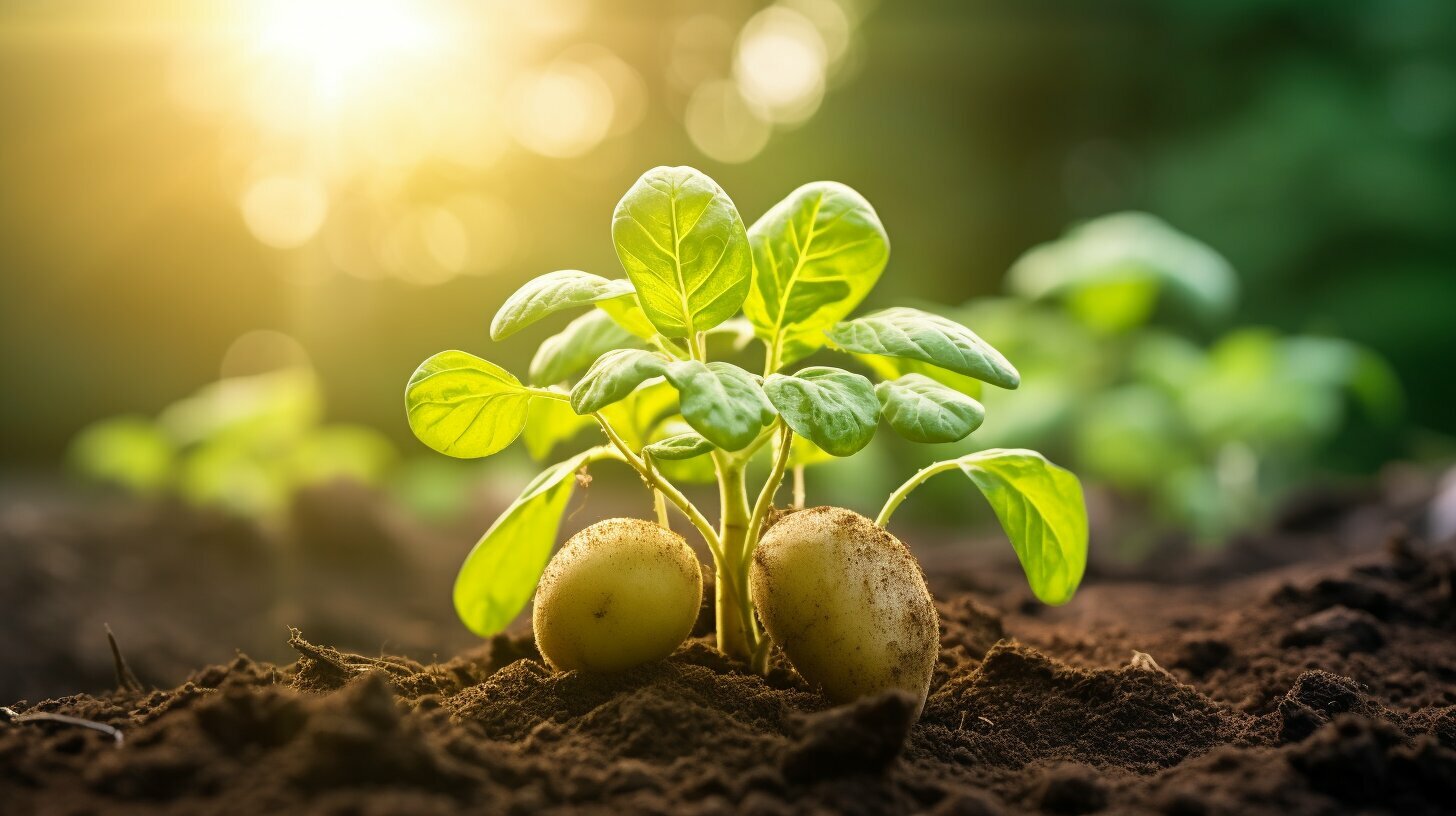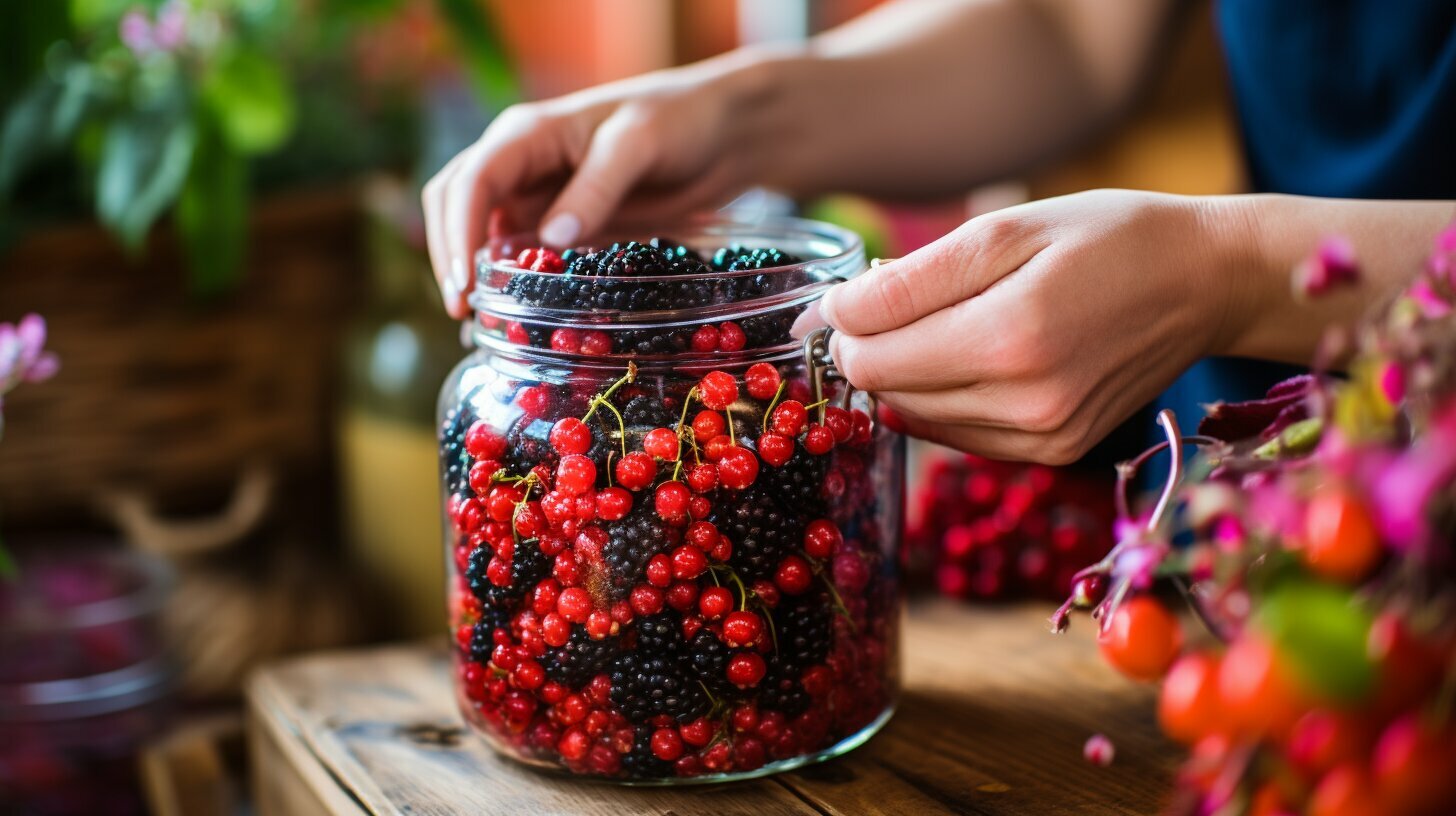Are you looking for a rewarding and fulfilling gardening experience? Why not try growing potatoes in your own backyard? Potatoes are a versatile and delicious crop that can be easily grown in a small space. With a little patience and expert guidance, you can enjoy a bountiful harvest of fresh, organic potatoes that will impress your family and friends. In this section, we will provide you with essential tips and techniques on how to grow potatoes successfully in your backyard.
Key Takeaways
- With the right guidance and techniques, anyone can grow potatoes in their own backyard.
- Patience and attention to detail are essential for a successful potato harvest.
- Proper soil preparation, plant selection, and care are crucial for potato cultivation.
- Protecting your potato crop from pests and diseases is critical to prevent yield loss.
- Proper potato harvesting and storage techniques are essential to preserve the flavor and quality of your crop.
Choosing the Right Potato Varieties for Your Garden
Before you start planting potatoes in your garden, it’s essential to choose the right potato varieties as it can make a significant difference in your harvest. There are numerous potato varieties available, each with unique characteristics that make them suitable for specific growing conditions.
The two primary categories of potatoes are determinate and indeterminate. Determinate potatoes are bushier and produce their crop all at once, while indeterminate potatoes continue to grow and produce potatoes throughout the growing season. Your garden’s location, climate, and soil type will influence the choice of potato variety you select for your garden.
Disclosure: When you buy through links on our site, we may earn an affiliate commission.
When selecting potato varieties for your garden, you must consider the days to maturity, which can range from 70 to 120 days. For example, if you live in a region with a shorter growing season, choose early potato varieties that mature in approximately 70 to 90 days.
Several types of potatoes, such as Russet, Yukon Gold, and Red Pontiac, are popular for their texture and flavor, making them ideal for baking, frying, and boiling. You can also consider growing purple, fingerling, and blue potatoes as they provide an alternative to the traditional white potatoes.
The ideal soil for growing potatoes is well-drained, loose, and rich in organic matter. Prior to planting your potatoes, it’s beneficial to amend the soil with compost, manure, or other organic matter. Doing so will improve drainage, soil fertility, and the potato’s ability to absorb nutrients.
Choosing the Right Potato Varieties for Your Garden
| Potato Variety | Characteristics | Suitable Growing Conditions |
|---|---|---|
| Russet | High in starch and suitable for baking and frying | Well-drained soil, cool climate |
| Yukon Gold | Yellow flesh, buttery texture, ideal for boiling and frying | Loose, well-drained soil |
| Red Pontiac | Red skin, white flesh, versatile for baking, boiling, and frying | Loose, well-drained soil, cool climate |
| Purple | Vibrant color, unique flavor, suitable for roasting and boiling | Well-drained soil, cool climate |
| Fingerling | Long, slender shape, waxy texture, ideal for salads and roasting | Well-drained soil, warm climate |
| Blue | Blue skin and flesh, nutty flavor, suitable for baking and frying | Well-drained soil, cool climate |
Remember that each potato variety has its unique preference for growing conditions, and it’s essential to research before planting to ensure your potatoes thrive and produce a bountiful harvest.

Preparing the Soil for Planting Potatoes
Before planting potatoes, it’s crucial to prepare your soil. Proper soil preparation ensures that your potato crop thrives, producing a bountiful harvest. Here’s a step-by-step guide to preparing your soil for planting potatoes.
Test Your Soil
The first step is to test your soil. You can purchase a soil testing kit from any garden center or send a soil sample to a laboratory for analysis. The results of your soil test will guide you on the necessary soil amendments required to create the best growing conditions for your potatoes.
Adjust Soil pH
Once you receive the test results, adjust your soil pH to the ideal range of 5.0-6.0. Lime, sulfur, or other amendments can be added to alter the pH of your soil. Potatoes prefer slightly acidic soil conditions and do not thrive in alkaline soil.
Loosen the Soil
Next, loosen the top 6-8 inches of soil to remove any weeds, rocks, or debris. Loosening the soil also helps to improve soil drainage, allowing for better root growth. Use a garden fork or tiller to loosen the soil, avoiding compacting the soil.
Amend the Soil
Add soil amendments such as compost, aged manure, or organic matter to improve soil fertility and texture. Mix the amendments into the soil to a depth of 4-5 inches. Avoid using fresh manure as it can burn your potato plants and attract pests.
Create Raised Beds
If you have heavy clay soil, consider creating raised beds to improve soil drainage. Build raised beds using untreated wood or other suitable materials. Fill the beds with a mix of soil, compost, and organic matter to create an ideal potato growing environment.
Mulch Your Soil
Finally, mulch the soil with straw, grass clippings, or other organic material to retain soil moisture, suppress weed growth and maintain soil temperature. Avoid using plastic mulch as it can trap heat and damage your potato plants.
By following this potato planting guide and preparing your soil before planting, you’ll establish the perfect growing conditions for your potato crop. With proper soil preparation, you’ll be one step closer to growing your own delicious potatoes in your own backyard!

Planting Potatoes: Step-by-Step Guide
Planting potatoes can be a rewarding experience, and with our step-by-step guide, you can ensure a bountiful harvest. Follow these expert tips to get started on your potato-growing journey:
Choose the Best Planting Time
The potato planting season typically falls in early spring, once the soil temperature reaches at least 40°F. To determine the best planting time for your area, check with your local agricultural extension office or consult a potato planting guide.
Select Healthy Seed Potatoes
Seed potatoes are small, whole potatoes or pieces of larger potatoes that are used for planting. To ensure healthy plants, choose seed potatoes that are firm, smooth, and free from sprouts, green spots, or other damage. Cut the seed potatoes into sections, each containing at least one eye, and let them dry for a day or two before planting.
Prepare the Soil
Proper soil preparation is vital for successful potato cultivation. Start by tilling the soil to loosen it and remove any rocks or debris. Test the soil pH and adjust it as needed to a range of 5.0-6.0. Incorporate organic matter such as compost or aged manure to improve soil fertility and structure.
Plant the Seed Potatoes
Plant the seed potatoes in rows, about 12 inches apart, and 4-6 inches deep. Cover the potatoes with soil and water thoroughly. As the plants grow, mound soil around the stems to keep the developing tubers covered and protected.
Maintain Proper Care and Watering
Keep the soil consistently moist but not waterlogged, watering about 1-2 inches per week. Once the plants are a few inches tall, begin fertilizing with a balanced fertilizer every two weeks. Mulch around the plants to retain moisture and suppress weed growth.
Harvest Your Potatoes
Your potatoes will be ready for harvest once the plants have bloomed and the foliage begins to yellow and die back. Carefully dig around the plants with a garden fork or shovel, being careful not to damage the tubers. Brush off any excess soil and let the potatoes dry for a few days in a cool, dark place before storing.

With these tips, you’ll have a successful potato harvest in no time. Happy planting!
Caring for Your Growing Potato Plants
Once your potato plants are in the ground, they require proper care to ensure a healthy and bountiful harvest. Here are some essential potato care tips to keep your plants thriving:
- Watering: Potatoes require consistent watering throughout the growing season. The soil should be kept moist but not waterlogged to avoid root rot. Water your plants deeply once a week, and more frequently during dry spells.
- Fertilizing: Potatoes are heavy feeders and require regular fertilization. Apply a balanced fertilizer every two to three weeks until the plants flower.
- Hilling: As your potato plants grow, they will need to be hilled or mounded with soil to encourage tuber growth and prevent greening. Hill your potatoes when they reach six inches in height, and repeat the process every few weeks as they continue to grow.
- Pest and disease control: Keep a close eye on your plants for signs of common potato pests and diseases, such as potato beetles and blight. If you notice any issues, take prompt action to prevent further damage.
By following these potato care tips, you can ensure that your plants stay healthy and productive throughout the growing season.

“Potatoes are a highly versatile and nutritious crop that can be grown in any backyard. With proper care and attention, you can enjoy a bountiful harvest of delicious and healthy potatoes.”
Managing Pests and Diseases in Potato Crops
Protecting your potato crop from pests and diseases is crucial to prevent yield loss. Pests such as potato beetles, aphids, and wireworms can cause significant damage to your plants, while diseases like late blight and blackleg can destroy entire crops.
Integrated Pest Management (IPM)
One of the most effective strategies for potato pest control is Integrated Pest Management (IPM). IPM involves using a combination of techniques, including natural predators, crop rotation, and pesticides, to manage pests and diseases without harming the environment.
Start by monitoring your plants regularly for signs of pest infestation or disease. You can use sticky traps or handpicking to physically remove pests, or use natural predators such as ladybugs or lacewings to control aphids and other small insects.
Crop rotation is also essential for preventing the buildup of pests and diseases in your soil. Avoid planting potatoes in the same spot for more than two years in a row and alternate with other crops such as legumes or grains.
If natural methods are not effective, you may need to use pesticides as a last resort. However, choose organic and environmentally friendly options whenever possible, and always follow the manufacturer’s instructions for safe and proper use.
Common Potato Pests and Diseases
Here are some common potato pests and diseases to watch out for:
| Pests | Symptoms |
|---|---|
| Potato Beetles | Defoliation, skeletonization of leaves, black excrement on leaves |
| Aphids | Stunted growth, curled leaves, yellowing, sticky residue on leaves |
| Wireworms | Brown scabby lesions on potatoes, tunneling in tubers |
| Diseases | Symptoms |
|---|---|
| Late Blight | Dark water-soaked patches on leaves, brown lesions on stems, black decay on potatoes |
| Blackleg | Black, rotten stems, yellowing leaves, soft rot in tubers |
| Scab | Raised, corky lesions on tubers |
By following these tips and techniques for potato pest control and staying vigilant for signs of infestation or disease, you can protect your potato crop and ensure a bountiful harvest of delicious and healthy potatoes.

Harvesting Your Homegrown Potatoes
Congratulations, you’ve made it to the most satisfying part of growing potatoes – it’s time for the harvest! Waiting until the end of the growing season to dig up those fresh potatoes can be challenging, but it’s worth the wait. Proper harvesting is critical for ensuring the best quality potatoes and preserving the skin’s integrity.
To get started, mentally prepare yourself to excavate your potato plants. It’s time to unearth the fruits of your labor. Gather your gloves, a bucket or basket, and a spade to dig into your potato patch. Remember to harvest on a dry day, so you don’t damage the potatoes during this process.
The first step is to cut back the foliage of your plants two to three weeks before harvesting. This process helps to dry out the plants, improving flavor and extending shelf life. Cutting back also allows the skins of the potato to harden and become more resistant to skinning during harvesting.
Once you cut back the plants, wait for two to three weeks before harvesting. This waiting period allows the potato skins to thicken and reduce moisture content in preparation for storage. Now it’s time to dig in and uncover your potato crop.
When harvesting, do it gently to avoid any nicks or bruises that can lead to spoilage during storage. Use a spade or pitchfork to loosen the soil beneath the potato plant and gently pull out the plant. Take out the tubers, collect them, and place them in your basket or bucket.
After harvesting, examine each potato to check for any bruising or cuts that occurred during the process. Avoid exposing your harvested potatoes to direct sunlight, as this can cause greening and make them inedible.
Finally, store your freshly harvested potatoes in a cool, dry, and dark place, like a root cellar or a cool basement. Avoid storing them close to onions, apples, or bananas, as these fruits can release ethylene gas, which can cause potatoes to spoil quickly.
Follow these simple steps, and you’ll be rewarded with the freshest, most delicious potatoes you’ve ever tasted. Enjoy your bountiful potato harvest, and don’t forget to share the joy with your friends and family!

Storing and Preserving Fresh Potatoes
After harvesting your potatoes, proper storage is crucial to preserve their freshness and quality.
The first step is to cure your potatoes by leaving them in a cool, dry, and well-ventilated area for 1-2 weeks. This process allows the skin to toughen and heal any cuts or bruises, extending their storage life.
Once cured, store your potatoes in a root cellar or cool, dark location with temperatures between 35-40°F and high humidity levels. Avoid storing potatoes with onions or apples, as they release gases that can cause spoilage.
| Method of Preservation | Description |
|---|---|
| In a Paper Bag | Place potatoes in a paper bag, fold the top over, and store in a cool, dark place. This method allows for air circulation, preventing moisture buildup. |
| In a Mesh Bag | Use a mesh bag or basket to store potatoes. This allows for even more ventilation and air circulation, reducing the risk of spoilage. |
| In a Root Cellar | Store your potatoes in a root cellar or cool, dark location with temperatures between 35-40°F and high humidity levels. Avoid storing potatoes with onions or apples, as they release gases that can cause spoilage. |
| Canning or Freezing | You can also preserve your potatoes by canning or freezing them. Canning involves pressure-cooking potatoes in jars, while freezing involves blanching and freezing potatoes in airtight containers. |
Remember to check regularly for any signs of spoilage, such as soft spots or sprouting. Remove any spoiled potatoes immediately to prevent spoilage from spreading.

Conclusion
You’ve learned everything you need to know about how to grow potatoes in your own backyard. By following our expert guidance, you can start your potato-growing journey today and enjoy the delicious flavors of your homegrown spuds.
Remember to select the right potato varieties and prepare the soil well before planting. Take care of your growing potato plants by watering, fertilizing, and managing pests and diseases. Finally, harvest your homegrown potatoes at the peak of perfection and store them properly to enjoy their flavor for months to come.
Happy Potato Growing!
FAQ
How long does it take to grow potatoes?
The time it takes to grow potatoes depends on the variety and growing conditions. On average, it takes about 80 to 120 days for potatoes to reach maturity after planting.
Can I grow potatoes in containers?
Yes, you can grow potatoes in containers. Choose larger pots or containers with good drainage, and use a well-draining potting mix. Follow the same planting and care instructions as for in-ground potato growing.
Do potatoes need full sun?
Yes, potatoes thrive in full sun. They require at least six to eight hours of direct sunlight per day to grow and develop properly.
How often should I water my potato plants?
Potato plants need consistent moisture, but avoid overwatering. Water deeply once or twice a week, keeping the soil evenly moist but not waterlogged. Adjust watering frequency based on weather conditions and the moisture level of the soil.
How do I know when my potatoes are ready for harvest?
Potatoes are ready for harvest when the foliage has turned yellow and begun to die back. Gently dig around the plant to check the size and maturity of the tubers. Harvest when the potatoes have reached the desired size and the skins are firm.
Can I save seed potatoes for the next planting season?
Yes, you can save seed potatoes for the next planting season. Select healthy, disease-free potatoes, and store them in a cool, dark place with good ventilation. Check them regularly for signs of rot or sprouting.
How should I store harvested potatoes?
Store harvested potatoes in a cool, dark, and well-ventilated location. Ideal storage conditions include a temperature of around 45-50°F (7-10°C) and a humidity level of 85-90%. Keep them away from light to prevent greening and bitter taste.
What are common pests and diseases that affect potato plants?
Common pests that affect potato plants include potato beetles, aphids, and wireworms. Diseases such as late blight, early blight, and potato scab can also impact potato crops. Implementing proper cultural practices and using organic pest control methods can help manage these issues.
Can I reuse potato plants or soil for the next growing season?
It is generally not recommended to reuse potato plants or soil from the previous growing season. Diseases and pests can linger in the plant material or soil, potentially affecting the next crop. It’s best to start with fresh seed potatoes and fresh soil each year to ensure healthy potato plants.




